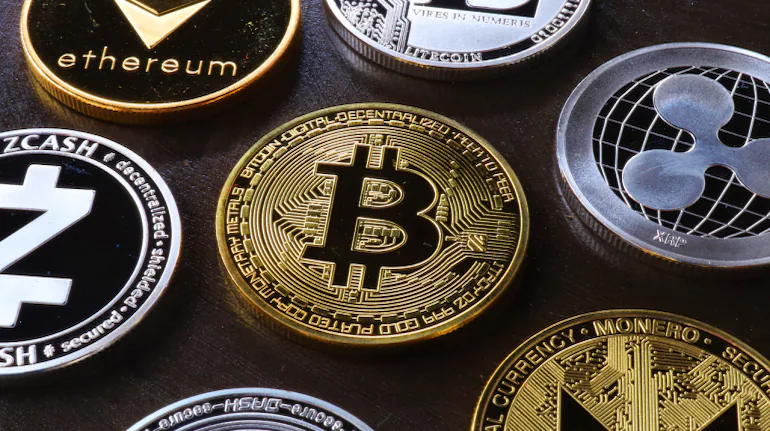Bitcoin?s cycles are changing ? Bloomberg analyst Jamie Coutts explains how and why
The world of Bitcoin cryptocurrencies is known for its volatility, and Bitcoin, as the pioneer of digital currencies

The world of cryptocurrencies is known for its volatility, and Bitcoin, as the pioneer of digital currencies, has always been at the forefront of this rollercoaster ride. Over the years, Bitcoin has experienced numerous price cycles, with dramatic ups and downs that have left both investors and enthusiasts on the edge of their seats. However, there's a growing consensus among experts that Bitcoin's cycles are changing. In this blog post, we'll explore the insights provided by Bloomberg analyst Jamie Coutts regarding the transformation of Bitcoin's price cycles and delve into the reasons behind these shifts.
The Traditional Bitcoin Price Cycle
To understand how Bitcoin's cycles are changing, it's essential to first grasp the traditional price cycle that Bitcoin has followed for most of its existence. Historically, Bitcoin has exhibited a pattern that can be divided into four distinct phases:
- Accumulation Phase: This phase typically follows a bear market and is characterized by a slow but steady increase in Bitcoin's price. Smart money investors accumulate Bitcoin during this phase when prices are relatively low.
- Bull Market Phase: As Bitcoin's price starts to gain momentum, it enters the bull market phase. This is when mainstream media attention begins to grow, and retail investors start flooding the market, driving prices higher.
- Mania Phase: This is the phase where FOMO (Fear of Missing Out) kicks in, and Bitcoin's price skyrockets exponentially. Speculative buying and media hype are at their peak during this phase.
- Bear Market Phase: Eventually, the bubble bursts, leading to a sharp correction in prices. This is the bear market phase, where many retail investors panic-sell, and Bitcoin's price experiences a significant decline.
How Bitcoin's Cycles Are Changing
According to Bloomberg analyst Jamie Coutts, Bitcoin's cycles are undergoing a fundamental transformation, and we are witnessing a deviation from the traditional cycle. Coutts argues that several key factors are contributing to this shift:
- Institutional Involvement: One of the most significant changes in recent years has been the increasing involvement of institutional investors and corporate entities in the cryptocurrency space. Companies like Tesla and MicroStrategy have allocated a substantial portion of their balance sheets to Bitcoin. This institutional adoption has brought stability to the market, reducing extreme price volatility.
- Regulatory Clarity: Regulatory clarity surrounding cryptocurrencies has improved in many jurisdictions. Governments and regulatory bodies are beginning to recognize the potential of cryptocurrencies and are working on creating a regulatory framework that provides security for investors. This increased regulatory certainty has led to a more stable market environment.
- Maturing Market: Bitcoin has been around for over a decade, and as it matures, it becomes less susceptible to extreme price swings. The market is gradually becoming more sophisticated, with better infrastructure, liquidity, and trading tools.
- Increasing Adoption: Bitcoin's adoption as a digital store of value and hedge against inflation has grown significantly. As more people recognize its utility beyond speculative trading, the market dynamics are changing.
- Economic Conditions: The macroeconomic environment also plays a crucial role. Economic uncertainty, fiscal policies, and global events can influence Bitcoin's price movements. In times of economic turbulence, Bitcoin is increasingly seen as a safe haven asset, which can impact its cycles.
Why Bitcoin's Changing Cycles Are Significant
Understanding why Bitcoin's cycles are changing is essential for investors and enthusiasts alike. Here are some key reasons why these changes matter:
- Reduced Speculative Mania: The shift away from extreme price speculation and FOMO-driven cycles means that Bitcoin is becoming a more stable and reliable asset. This is positive for long-term investors who seek steady growth rather than short-term gains.
- Increased Legitimacy: Institutional involvement and regulatory clarity lend credibility to the cryptocurrency market. This, in turn, attracts more conservative investors who may have been hesitant to enter the market in the past.
- Diversification: As Bitcoin's cycles change, it may become an even more attractive option for diversifying investment portfolios. Investors can rely on Bitcoin not only as a potential source of high returns but also as a hedge against economic uncertainties.
- Mainstream Adoption: A less volatile Bitcoin is more likely to be adopted by mainstream businesses and individuals for everyday transactions. It could become a legitimate alternative to traditional fiat currencies.
In conclusion, Bitcoin's cycles are indeed changing, and the reasons behind this transformation are multifaceted. With institutional involvement, regulatory clarity, a maturing market, increasing adoption, and changing economic conditions, Bitcoin is evolving from its historical pattern of extreme price volatility.
This shift is significant because it makes Bitcoin a more stable and credible asset, attracting a broader range of investors and potentially paving the way for greater mainstream adoption. As the cryptocurrency landscape continues to evolve, keeping an eye on these changing cycles and understanding their implications is crucial for anyone interested in the world of digital assets.
What's Your Reaction?
















